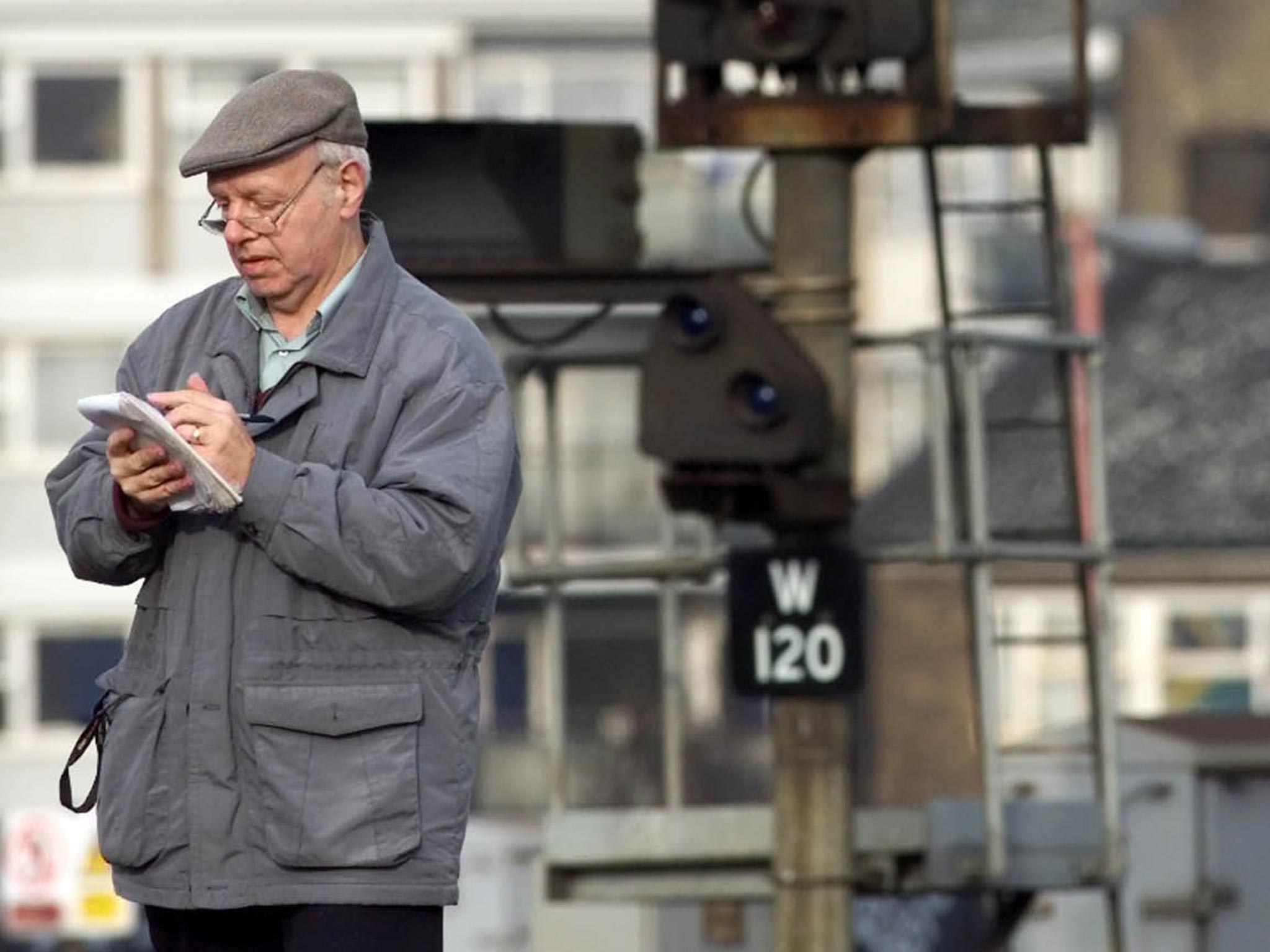Calling all trainspotters: National Railway Museum asks eager ferroequinologists to step forward

Your support helps us to tell the story
From reproductive rights to climate change to Big Tech, The Independent is on the ground when the story is developing. Whether it's investigating the financials of Elon Musk's pro-Trump PAC or producing our latest documentary, 'The A Word', which shines a light on the American women fighting for reproductive rights, we know how important it is to parse out the facts from the messaging.
At such a critical moment in US history, we need reporters on the ground. Your donation allows us to keep sending journalists to speak to both sides of the story.
The Independent is trusted by Americans across the entire political spectrum. And unlike many other quality news outlets, we choose not to lock Americans out of our reporting and analysis with paywalls. We believe quality journalism should be available to everyone, paid for by those who can afford it.
Your support makes all the difference.Gathered patiently on the platform edge armed with little more than a notebook and a lightweight cagoule, few among the travelling public understand what it is that drives Britain’s army of trainspotters.
But now, as part of a major new six-month exhibition celebrating the enduring fascination for the railway, enthusiasts are being urged to come out of the cold and share their tales of trainspotting derring-do and adventure.
The National Railway Museum is calling ferroequinologists from Euston to Inverness and Paddington to Penzance, or anyone from anywhere in the world who has ever logged an engine number or photographed a boiler plate to reveal their pictures, notes and memories and help offer an insight into their passion.
Amy Banks, an interpretation developer at the museum in York said the exhibition would document the sense of “mischief” and “drama” associated with the hobby, which enjoyed its heyday in the final years of steam following the Second World War.
The recollections will accompany a specially commissioned piece by the film artist Andrew Cross due to go on display in September, which aims to challenge misconceptions of the pursuit.
“Trainspotting was one of the most popular hobbies for boys in the 1950s and 60s, and although our art commission will be looking the subject from a fresh and contemporary stance, we also need real stories from the tracks to inform our supporting trainspotting season, which will include a variety of events and activities.
“We hope the public will share their trainspotting tales not only from the nostalgic past, but from a present and potentially international perspective,” she said.
Among those who have already contributed to the project is John Billard from Reading, Berkshire.
He contacted the museum to describe an illicit close encounter with the legendary Flying Scotsman as it made its last run with British Railways departing from Kings Cross at 1.13 pm on 14 January 1963 en route to Leeds – capturing a still treasured picture of the historic occasion.
“I had heard about it the previous week while spotting at Kings Cross. The only trouble was that it was a weekday and I was supposed to be at school. Living in Wembley I thought that I might bunk off at the lunch break and only be about 20 minutes late getting back, which I hoped would not be noticed. Anyway that is what I did and the picture is the result. From the age of some of those in the picture, I might not have been the only one,” he said.
Nick Beilby, who grew up in York and is now a volunteer at the museum, recalls being caught looking at trains at the engine shed in the city.
“I sneaked in a side door to the diesel depot, and was horrified to see a row of polished feet. I legged it, but in entirely the wrong direction and ran smack bang into the boss.
“My school uniform was a dead giveaway and I thought I would be reported to my headmaster, and be in all sorts of serious trouble, but after a reminder to ask permission in future, I was allowed to take any numbers that I hadn’t already got in my trusty Ian Allan book,” he said.
Those with trainspotting tales should contact Amy at amy.banks@nrm.org.uk or post pictures and stories on the museum’s website. Images can be submitted via twitter using #trainspotting @railwaymuseum
Join our commenting forum
Join thought-provoking conversations, follow other Independent readers and see their replies
Comments